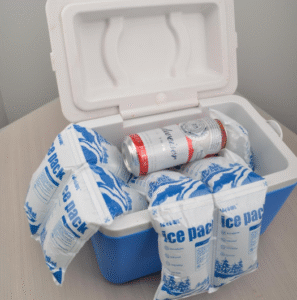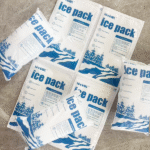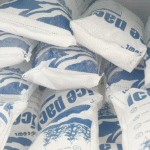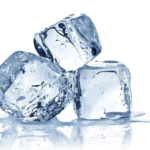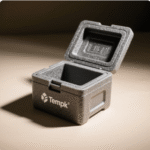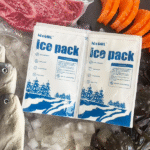Si vous expédiez des marchandises surgelées, sachets de glace sèche vous aider à rester conforme, faire le ménage, Et toujours froid. Ils contiennent des granulés ou des blocs tout en laissant le co₂ s'échapper, Alors votre produit reste gelé et les gestionnaires restent en sécurité. Ce guide montre comment tailler, paquet, étiquette (UN1845), et choisissez des alternatives pour des voies de 24 à 72 heures 2025.
-
Quand utiliser des poches de glace sèche pour les voies congelées Et en quoi ils diffèrent des pochettes Gel et PCM
-
De combien de sachets de glace sèche dont vous avez vraiment besoin pendant 24 à 72 heures sans payer trop cher
-
Comment étiqueter et évacuer correctement Sous un1845 et ici pi 954 dans 2025
-
Quand choisir du gel ou du PCM à la place Pour éviter les étapes de danger sur les itinéraires réfrigérés
-
Tendances 2025 qui affectent les matériaux, listes de contrôle d'acceptation, et durabilité
Que sont les sachets de glace sec et quand devriez-vous les utiliser?
Réponse courte: Les sachets de glace sec sont ventilées, Des sacs ou des manches résistants à l'éloigne. Utilisez-les lorsque vous avez besoin d'un contrôle congelé de plusieurs jours (≤ −18 ° C), manipulation plus sûre, et les emballages plus tristes que les pastilles lâches.
En pratique: La poche sépare le réfrigérant du produit, réduit le désordre, et améliore le placement autour de la charge utile. Certaines équipes utilisent également des «sachets thermiques» isolés avec du gel ou de la glace sèche pour prolonger le temps de maintien des envoyeurs et des bacs. Confirmez toujours que la «poche» que vous achetez est censée contenir glace carbonique Et pas le produit.
Sachets sur glace sèche vs. packs de gel vs. Pochettes PCM
Fin de compte: Les sachets de glace sèche offrent une marge ultra-froide; Le gel et le PCM tiennent plus, Riche plus chaude avec réservation plus simple. La glace sèche se trouve près de −78,5 ° C, tandis que le gel typique plane autour de 0 à 5 ° C et que les briques PCM peuvent cibler −20 ° C ou + 5 ° C au besoin. Utilisez des poches de glace sèche pour les voies profondes et les voies chaudes.
| Option de réfrigérant | Gamme typique | Mieux pour | Ce que cela signifie pour vous |
|---|---|---|---|
| Sachets de glace sèche | ~ −78,5 ° C | 24–96 H Frozen | Nécessite la ventilation et l'ONU1845 / la classe 9 par air; capacité de refroidissement la plus élevée. |
| Pochettes PCM (Par exemple, −20 ° C ou + 5 ° C) | −25 ° C à + 7 ° C | 12–36 h Frozen ou réfrigéré | Contrôle plus stricte sans document DG sur de nombreux services. |
| Packs de gel | 0–5 ° C | Fiche de nuit | Facile, réutilisable, Mais pas pour de longs titulaires surgelés. |
Conseils pratiques lorsque vous êtes nouveau dans les sachets de glace sèche
-
Ne jamais sceller Co₂. Utilisez des pochettes poreuses ou de path; ne jamais chauffer le sac.
-
Condition préalable. Produit dur et pré-refuser l'expéditeur pour réduire la charge précoce.
-
Distribuer la masse. Plusieurs petites poches autour de la charge utile ont battu une grosse brique.
Instantané réel: Une boulangerie d'expédition de gâteaux de glace est passée des pastilles en vrac aux poches de glace sèche et de couper le nettoyage tout en gardant le temps de maintien stable en contrôlant les kilogrammes totaux et les chemins de ventilation.
De combien de sachets de glace sèche avez-vous besoin pendant 24 à 72 heures?
Règle rapide: Commencer par ~ 2,5–5 kg par 24 h pour un expéditeur de 10 à 15 L par temps chaud, Puis Tourn By Lane Test. Divisez 2 à 4 sachets sur glace sec pour augmenter la surface froide et la stabilité.
Pourquoi ça marche: La glace sèche absorbe une grande quantité de chaleur car elle sublime; Planification par surface et ambiant, Pas seulement des litres, donne des résultats plus fiables.
| Durée | Bénin (≤22 ° C) | Chaud (23–30 ° C) | Chaud (≥31 ° C) | Ce qu'il faut faire |
|---|---|---|---|---|
| 12 h | 1–2 kg | 2–3 kg | 3–4 kg | 1–2 pochettes à glace sèche par 12 L expéditeur. |
| 24 h | 2.5–4 kg | 4–6 kg | 6–7 kg | Ajouter des poches latérales pour augmenter la surface. |
| 48 h | 5–7 kg | 7–10 kg | 10–12 kg | Mettre à niveau l'isolation ou le nombre de pochettes. |
| 72 h | 7–9 kg | 10–13 kg | 13–16 kg | Valider dans les conditions de pic. |
Placement et ventilation pour les sachets de glace sèche
Placer les sachets de glace sèche en bas et les côtés, centrer la charge utile, puis garnir d'une autre pochette. Gardez les doublures ouvertes et la boîte extérieure à l'évent; Évitez les coutures entièrement collées ou les refroidisseurs hermétiques. Marquez la masse de glace sèche nette en kilogrammes.
Pratique, Conseils prêts à l'utilisateur
-
Voie chaude? Ajouter un pcm mince -20 ° C à côté du produit; Pousser les poches de glace sèche vers l'extérieur.
-
Skus mixtes? Séparez-vous avec un intérieur rigide pour éviter les taches de broyage et froides.
-
Réception des notes. Inclure un glissement en notant «emballé avec de la glace sec» et les kilogrammes nets.
Cas en bref: Deux 2.5 Les poches de glace sèche kg plus un mince −20 ° C PCM tenaient une expédition de glace de 48 heures sous -18 ° C malgré un délai de dépôt de 2 heures.
Lequel 2025 Les règles s'appliquent aux sachets de glace sèche, Et comment passez-vous l'acceptation?
Règle de base pour l'air: Marque «Glace sèche» ou «dioxyde de carbone, solide,»Un1845 et le poids de glace sec nette (kg) sur le même visage que la classe 9 étiquette. L'emballage et les sachets doivent secouer. La déclaration de l'expéditeur n'est souvent pas requise lorsqu'elle est utilisée avec des produits non DG, Mais les listes de contrôle d'acceptation s'appliquent toujours.
Passager vs. cargaison: Les bagages plafonnent généralement de la glace sèche à 2.5 kg par passager avec approbation des compagnies aériennes et emballage ventilé; La cargaison suit pi 954 et variations de l'opérateur. Traiter le transport de passagers comme un régime différent.
Liste de contrôle rapide de la conformité pour les pochettes de glace sèche (Copier / coller à SOP)
-
Utiliser des poches de glace sèche construites à des fins; ne pas sceller le co₂ en plastique.
-
Gardez les doublures ouvertes; assurer le extérieur est-il accessible à l'évent.
-
Marque UN1845, nom propre, et Kg net; Appliquer la classe 9 étiquette.
-
Réservez un service qui accepte la glace sèche; Ajouter les détails AWB selon les besoins.
Sachets de glace sèche ou alternatives: Ce qui correspond à votre voie?
Choisir les poches de glace sèche Lorsque vous devez garder le produit congelé final à fin, Le transit dépasse 36 heures, ou pics ambiants au-dessus de 30 ° C. Choisir les pochettes PCM pour les bandes serrées (−20 ° C ou + 5 ° C) Sans paperasse DG. Cueillette Pour les livraisons réfrigérées dans le jour ou la nuit.
Vérification de la voie à deux minutes (auto-évaluation)
-
La charge utile doit-elle rester congelée solide?
-
Le transit dépassera-t-il 36 heures de porte à la porte?
-
Ambient dépassera 30 ° C sur l'itinéraire?
-
Votre opérateur accepte-t-il UN1845 sur votre service?
Si vous avez vérifié 3+ boîtes, Concevoir autour des pochettes de glace sèche; Sinon, tester un package PCM-First.
2025 Développements et tendances pour les pochettes de glace sèche
Quoi de neuf: Les opérateurs ont rafraîchi les travaux d'acceptation aident à souligner la ventilation, taille de l'étiquette, et visibilité du net-kg. Les fournisseurs d'emballage ont été étendus «Sacs à glace sec» basés sur du papier et sachets thermiques isolés; Les gels composables mûrissent comme des alternatives à court terme lorsque la glace sèche est limitée.
Dernier en un coup d'œil
-
Considération claire «pas de plastique scellé» En acceptation, les listes de contrôle réduisent le risque de rejet.
-
Options Eco-Pouch Coupez les déchets tout en améliorant le contrôle de l'humidité à l'intérieur des boîtes.
-
Expéditeurs à double direction gagner: Sachets de glace sèche pour les routes interétatiques chaudes, SCHECHS PCM POUR COURT, voies réglementées.
Perspicacité du marché: La croissance des gênoirs et des biologiques congelés pousse les stratégies de réfrigérant mixtes et une meilleure isolation, avec une géométrie de l'emballage validé qui a autant d'importance que le total des kilogrammes.
Des questions fréquemment posées sur les sachets de glace sèche
Q1: Sont des pochettes de glace sèche comme les sacs à glace sous vide?
Non. Les sachets de glace sèche doivent évacuer le gaz être sûr et conforme; Le co₂ de l'agitation sous vide est dangereux.
Q2: Puis-je mettre des sachets de glace sèche à l'intérieur d'une doublure en poly?
Oui - Gardez la doublure ouvrir Alors Co₂ peut s'échapper; Le package extérieur doit également évacuer.
Q3: De combien de glace sèche ai-je besoin 48 heures?
Plan ~ 5–9 kg pour une petite glacière par temps chaud, se séparer sur plusieurs sachets. Valider sur votre voie.
Q4: Quelles étiquettes vont sur une boîte avec des poches de glace sèche?
Appliquer UN1845, le nom propre, kilogrammes nets, et un Classe 9 étiqueter sur le même visage.
Q5: Les pochettes de glace sèche fonctionnent-elles pour les expéditions de nourriture?
Oui. Ils empêchent le contact direct avec les granulés et réduisent le gâchis, idéal pour Pack de glace sec pour expédier des aliments scénarios. Utilisez des emballages et des gants ventilés.
Résumé et recommandations pour les poches de glace sèche
Souviens-toi: Les sachets de glace sec font de l'expédition congelée plus propre et plus sûre en contenant des pastilles tout en permettant à Co₂ d'évacuer. Passer l'acceptation en marquant UN1845 avec des kilogrammes nets et en utilisant. Taille par itinéraire, ambiant, et surface plutôt que des litres seuls.
Étapes suivantes: Carte votre temps de voie et ambiant, commencer à 2.5–5 kg par 24 h, Diviser plusieurs sachets de glace sèche, et exécuter un essai. Standardiser votre SOP et vos étiquettes, puis ajustez ± 1 kg en fonction des données.
À propos du tempk
Nous aidons la nourriture, Pharma, et les équipes biotechnologiques choisissent des expéditeurs validés, taille sachets de glace sèche ou PCMS, et traduire 2025 Règles d'acceptation en listes de contrôle faciles. Notre bord est des calculatrices pratiques, Test de la voie réelle, et des SOP de prise rapide qui réduisent les réclamations et le coût.
CTA: Partagez la taille de votre boîte, voie, et les températures cibles - obtenez un gratuit, Kit d'emballage et étiquette spécifique à la voie aujourd'hui.






